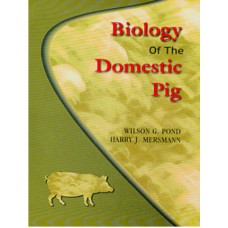ISBN: 817473161X
Edition:
Year:
Pages:
Size:
Publisher :
The pig is unique among the domestic animals in that it contributes to society in two ways: (1) it is a major source of human food worldwide and (2) it has become widely used as an animal model in bio-medical research. During the ensuing years the knowledge base of pig biology has expanded enormously as a result of increases in use of pig biomedical research and in research and Technology related to commercial pork production as a food resource worldwide.
The goal in the “The biology of the Domestic Pig” is to present an integrated description of current knowledge of the biology of normal pig. The intended audience remains primarily animal scientists, veterinarians, bio-medical scientists and students. The 17 chapters of the book, written by recognized authorities in their specialized fields, not only emphasize normal structure and function, but also address specific application of the pig in medicine and agriculture, notably the prospects of the use of the pig in new roles, for example, as an organ donor in xenotransplantation. The information presented and the literature cited provides a basis for continuing to develop a greater body of information.
Write a review
Your Review: Note: HTML is not translated!
Rating: Bad Good




